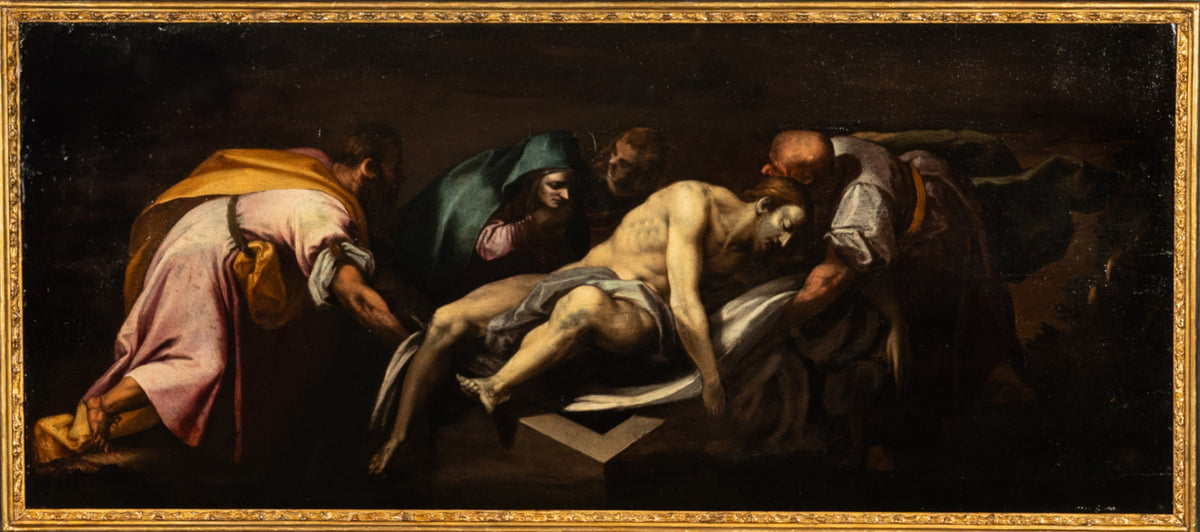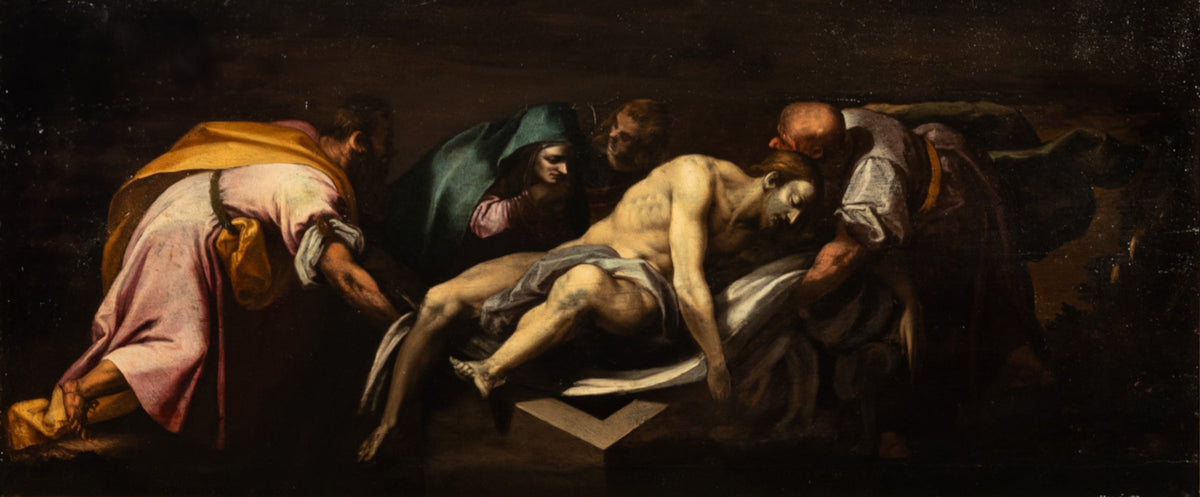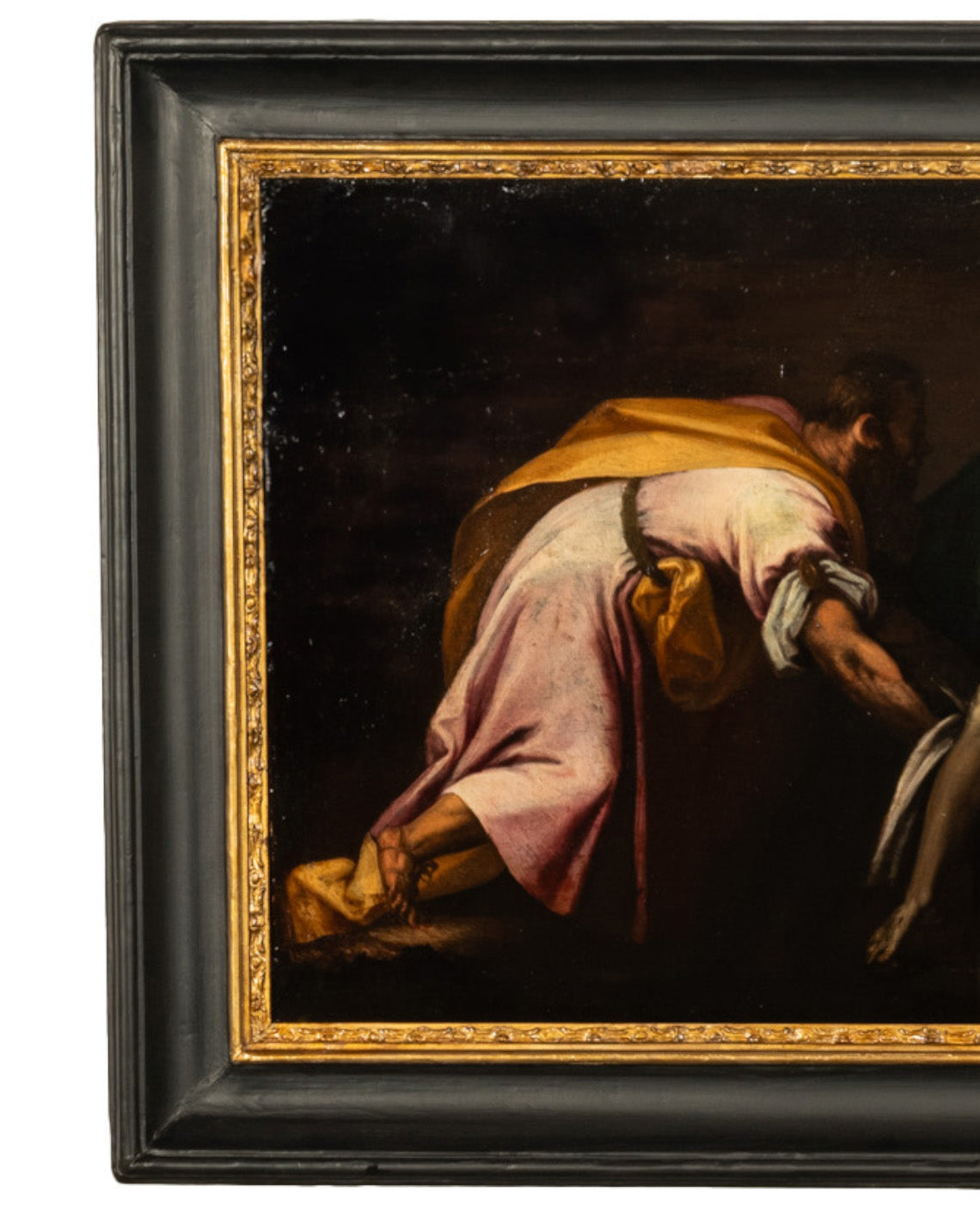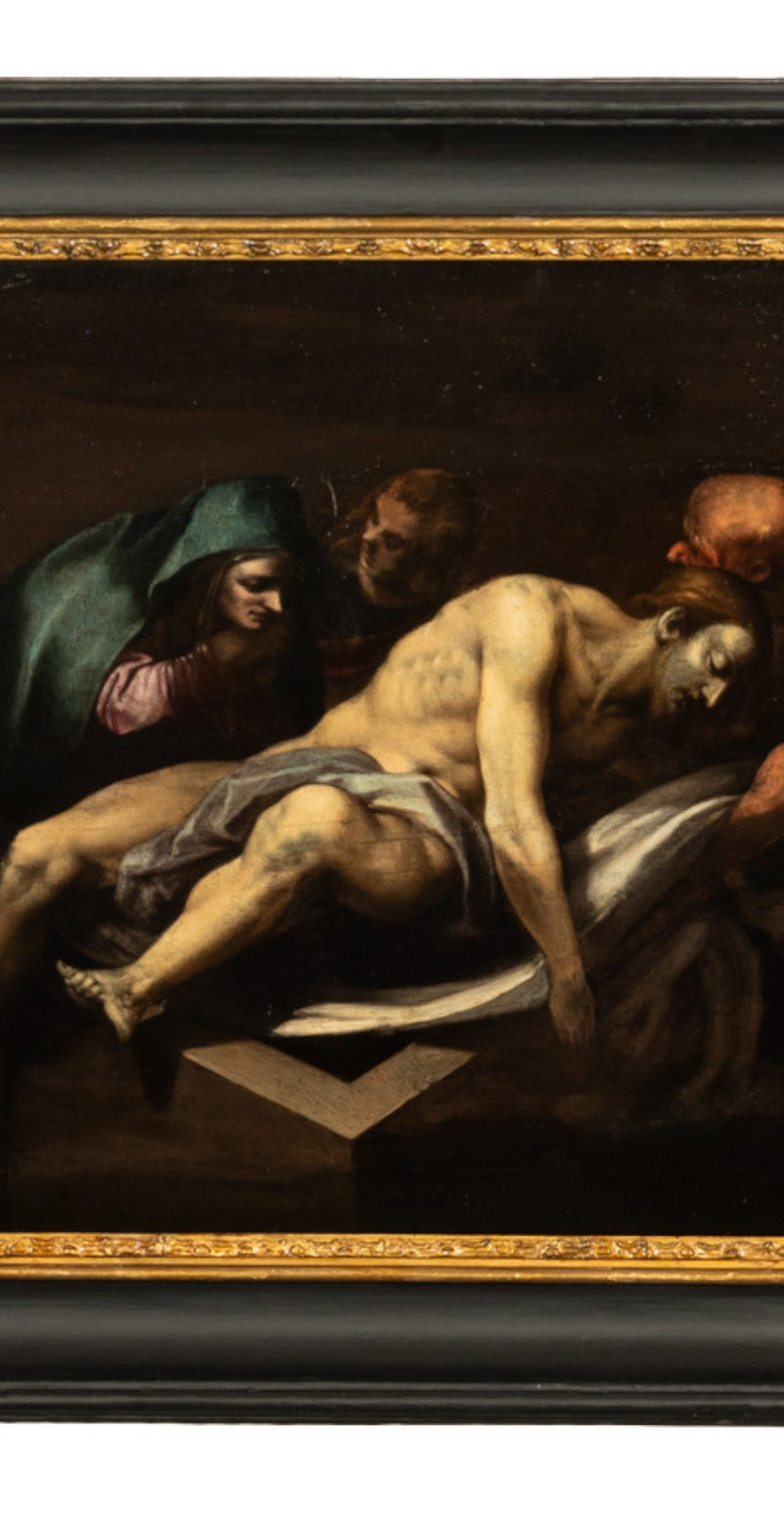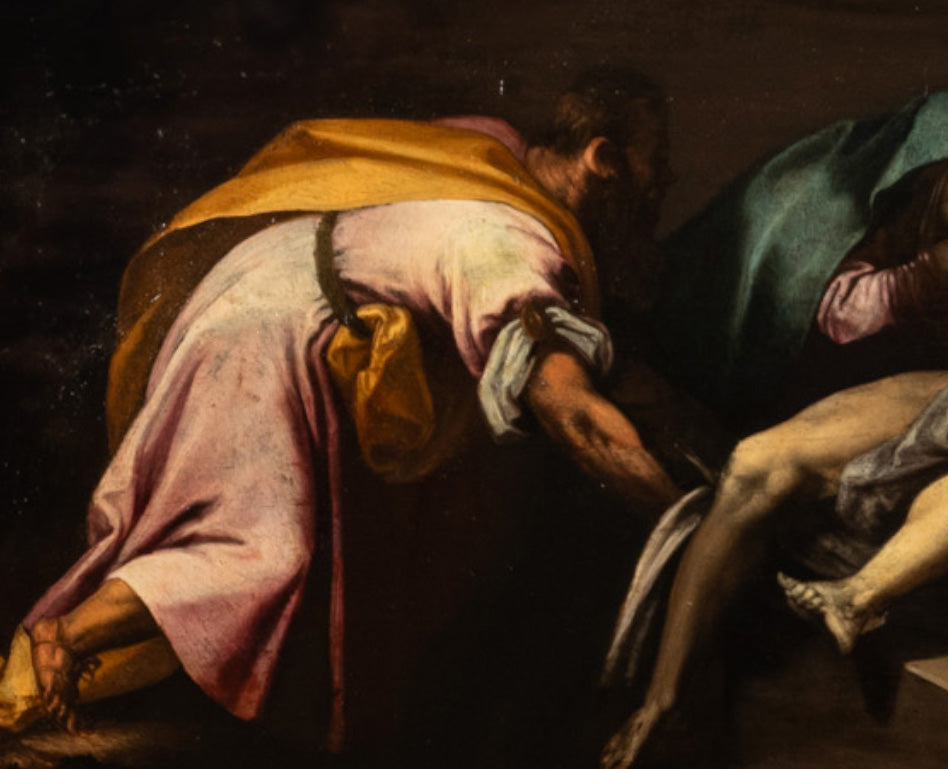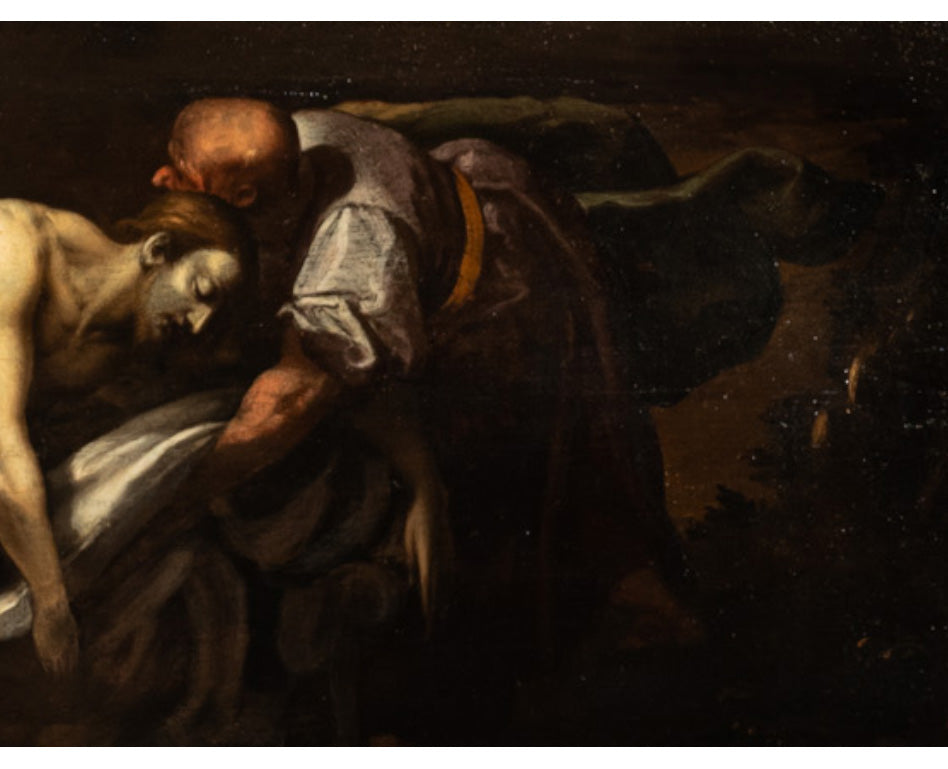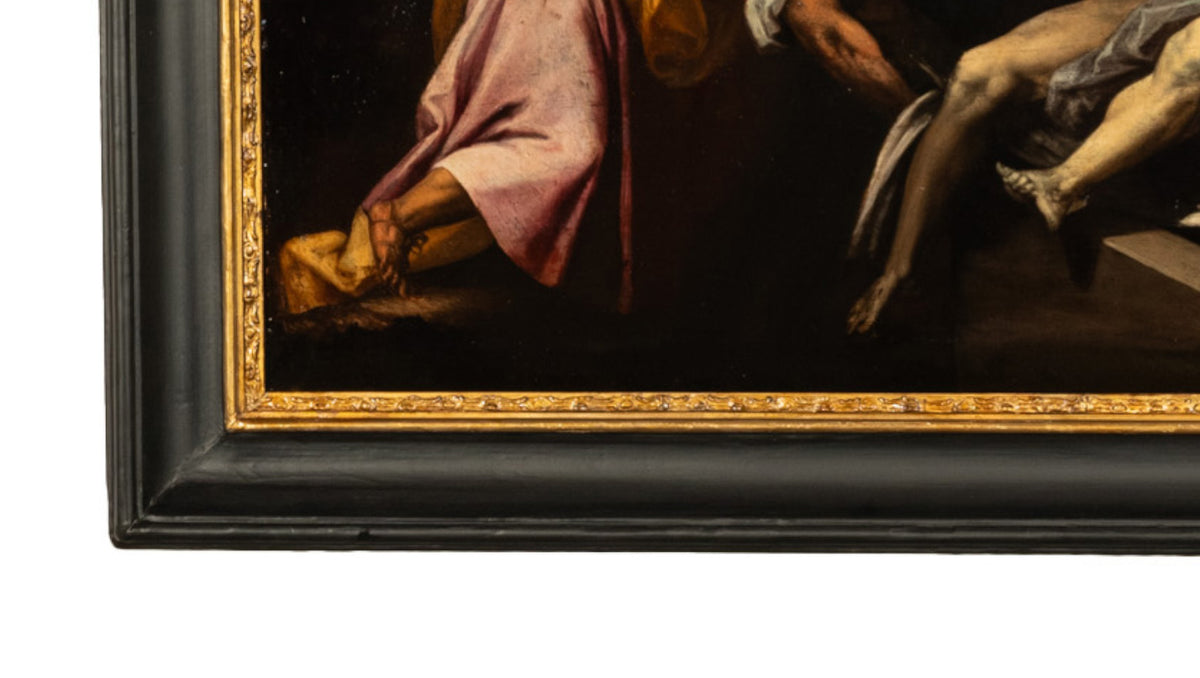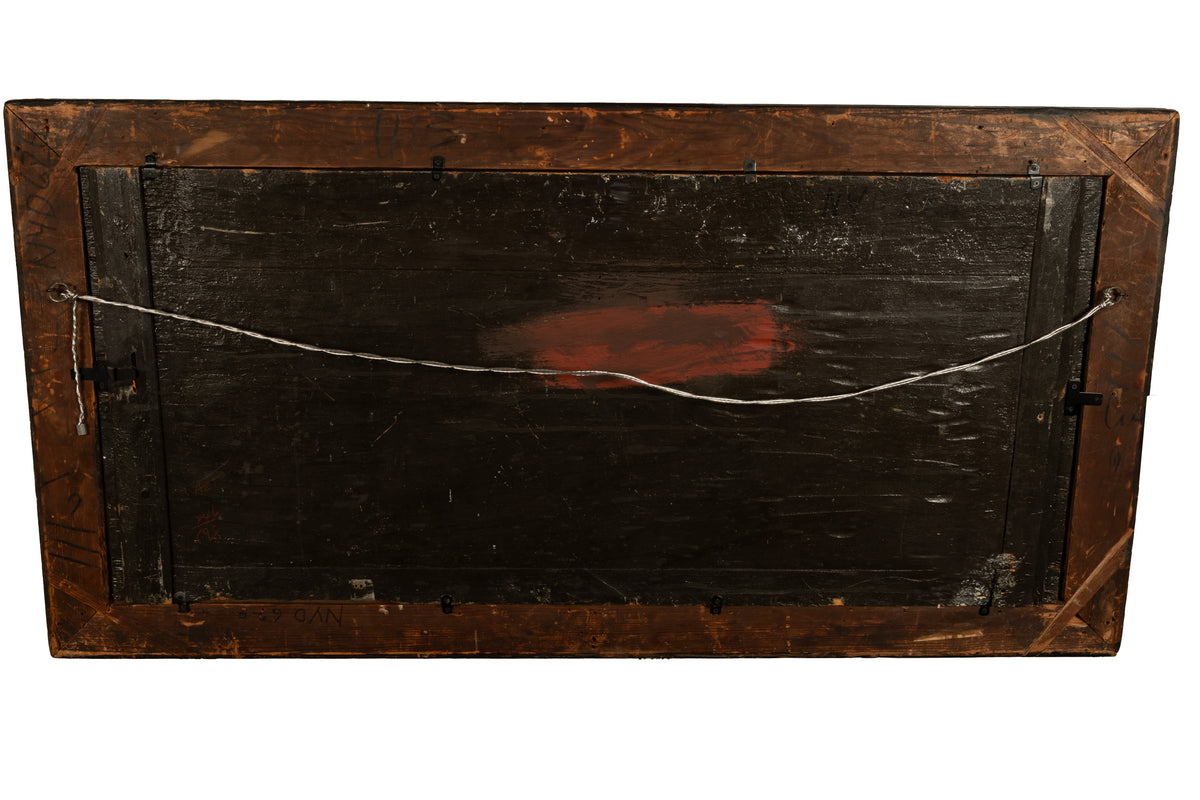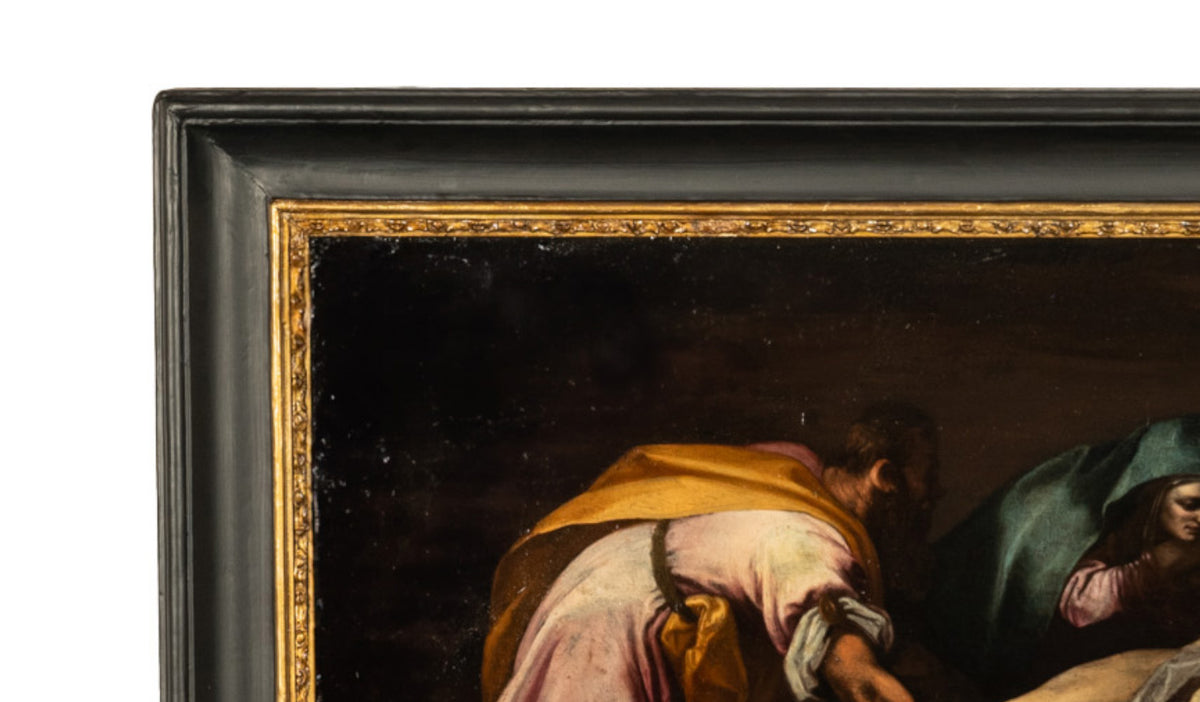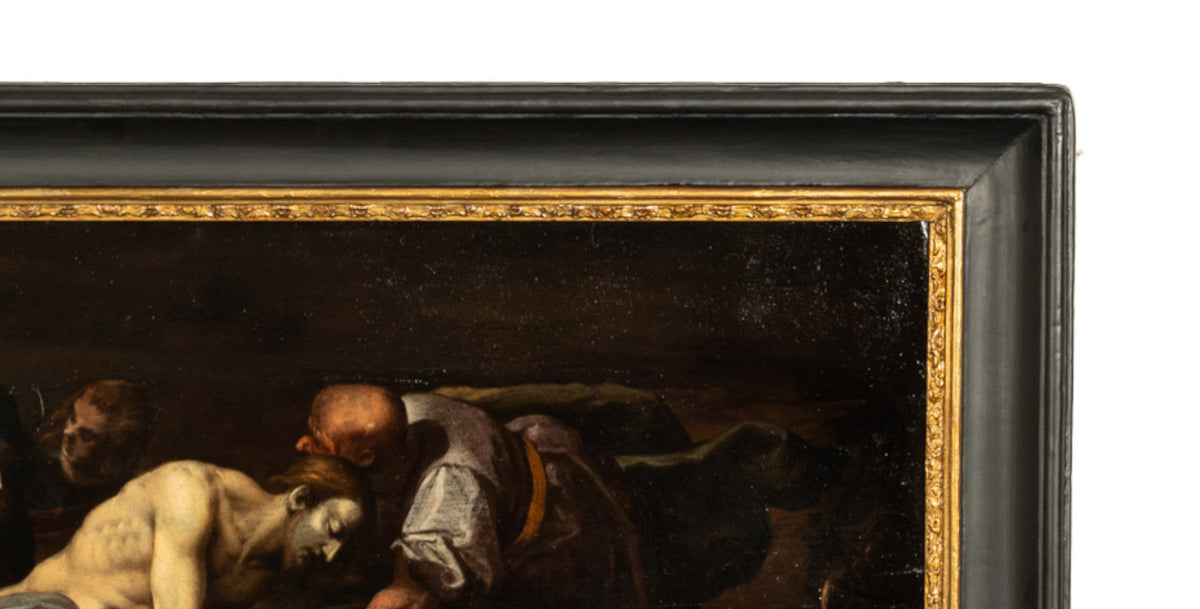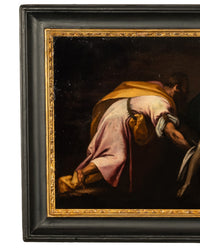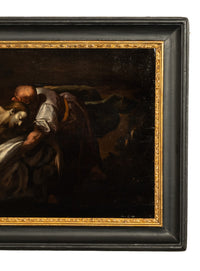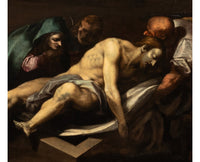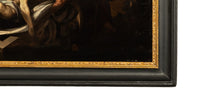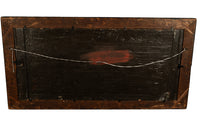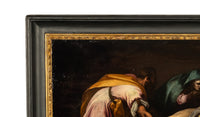Italian Early 17th Century Renaissance Baroque Oil Painting Entombment of Christ attributed to Daniele Crespi 1620
- Regular
- $ 7,800
- Sale
- $ 7,800
- Regular
- Unit Price
- per
An important & large Italian Baroque period oil painting on panel attributed to Daniele Crespi (1598-1630), "The Entombment of Christ", Milan circa 1620. See artist biography below.
The painting depicts Christ having being removed from the crucifix and being prepared for entombment, the painting shows The Virgin Mary is being comforted by another figure and Nicodemus is shown pulling down the shroud as another male figure rests Christ's body on the shroud that he is about to be laid to rest in. The artist displaying a significant influence of Caravaggio.
The painting is on a substantial walnut panel and is housed in a 19th century black hardwood frame with a gilded liner, condition is very good, the painting has just been professionally cleaned and re-varnished by one of the West Coast's most skilled conservators, this exceptional painting is ready to hang on your wall.
Daniele Crespi (1598–1630) was an Italian Old Master painter & draftsman. He is regarded as one of the most original artists working in Milan in the 1620s. He broke away from the exaggerated manner of Lombard Mannerism in favor of an early Baroque style, distinguished by clarity of form and content. A prolific history painter, he was also known for his portraits and religious subjects.
He was born in a family that was originally from Busto Arsizio. It is not clear whether he himself was born in Busto Arsizio or in Milan. The date of his birth is not known with certainty with estimates ranging from 1591 to 1598. His training is not well documented and he is first recorded in 1619 as working with local painter Guglielmo Caccia working on an assignment in a church in Milan.
One of his first teachers was Giuseppe Vermiglio of Turin. He next studied with Giovanni Battista Crespi and Giulio Cesare Procaccini. In 1621, Crespi was involved with the Accademia Ambrosiana, Crespi died in Milan during the plague epidemic in 1630.
Among his pupils was Melchiorre Giraldini, Crespi was mainly active as painter of religious subjects used as decoration for churches. He was also known for his sensitive portraits. He was an excellent colorist, known for the simplistic beauty of his compositions. His best works include a series of pictures from the life of Saint Bruno (now in the Certosa di Garegnano in Milan) and a depiction of the Stoning of St. Stephen (in Brera). Another masterpiece is the dark 1628 Supper of St Carlo Borromeo in the church of Santa Maria della Passione in Milan, one of the best-known early 17th-century paintings in northern Italy. Other works by him can be found in Milan and Pavia (Pavia Cathedral and Certosa di Pavia.
The Conversion of Saint Paul, painted about 1623, is considered to be the artist's finest painting in the United States (at the Blanton Museum of Art in Austin). When compared to Caravaggio's earlier work in the Cerasi Chapel, it shows the persistence of Crespi's Mannerist traits.
Imperial
ches high × ches wide × ches deep
Metric
high × wide x deep
Displayed rates are for shipping in the Continental U.S. and Canada. For other locations, kindly contact us and we will provide the most competitive shipping price available. All shipments are professionally packed and shipped insured with full tracking capabilities. Customers are also welcome to collect their items from our warehouses or arrange their own shipping.


